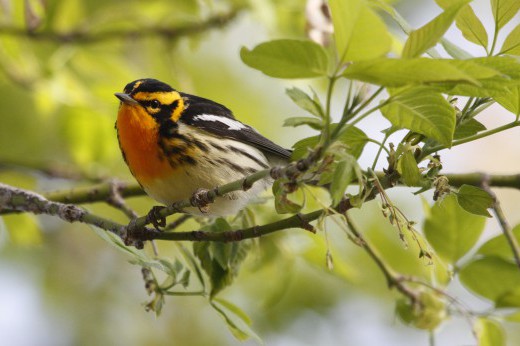After a gray and listless winter, the bright yellow pine warbler brings some color back to the northeast. It makes its way through Brooklyn during its migration and is one of the first songbirds to arrive in spring.
Most warblers migrate to the tropics of Central America or even South America in fall, but the pine warbler (Setophaga pinus) only migrates as far as the southern U.S. (Some are able to overwinter in this area, though this is rare.) Since it doesn’t travel so far, it has a head start on its return, usually arriving around the end of March or beginning of April.
True to its name, the pine warbler spends most of its time in and among pine trees, where it forages for food, nests, and raises its young. You have probably heard its soft trill if you’ve walked through a pine or deciduous-pine forest. Its diet consists mostly of insects, but it’s able to eat berries, suet and, in some cases, seeds. This warbler does not breed in Brooklyn Botanic Garden, Prospect Park, or Central Park, but it does breed just outside of the city, in Nassau, Suffolk, and Westchester counties and beyond. Now is the best time for New Yorkers to see pine warblers as they migrate through the city.
Adult pine warblers, especially males, are relatively easy to identify in the spring because of their bright yellow breasts, white wing bars, and soft song. (The females have some color but not as much.) And of course, their location is a big clue—expect to see them in pine trees. Birds in their fall plumage, especially juveniles, are more gray and can be found in many places, sometimes hopping along on the ground.
More: Read about the eastern phoebe and the American woodcock, two other migrating birds arriving in Brooklyn in early spring.
Bird-watchers get excited when they see their first pine warbler of the year. This bird is the first wave in the flood of southern and tropical songbirds that are heading up to our area and a sign that the miracle of spring has begun.
The Birds of Brooklyn series looks at some of the most familiar and fascinating birds that call Kings County their habitat.



